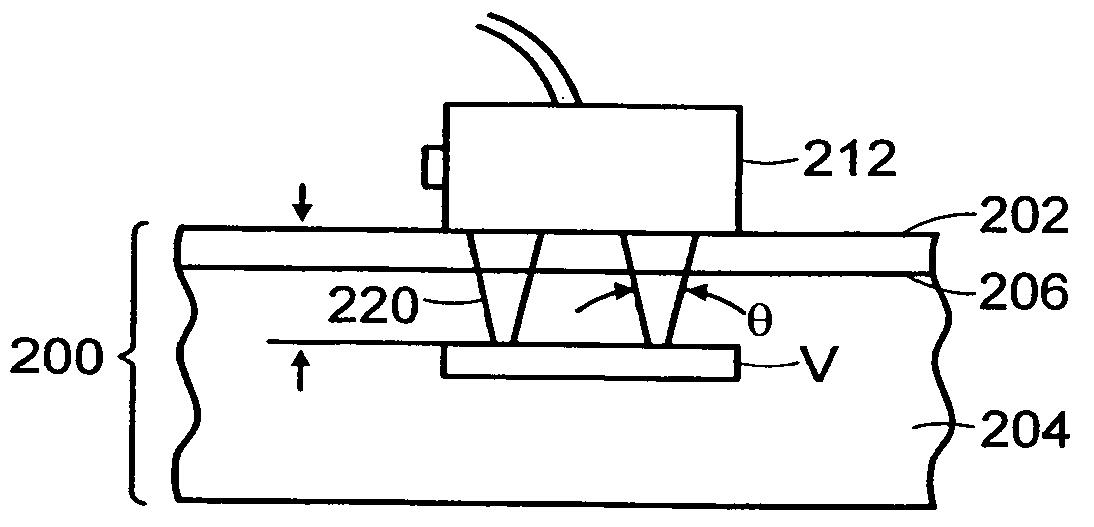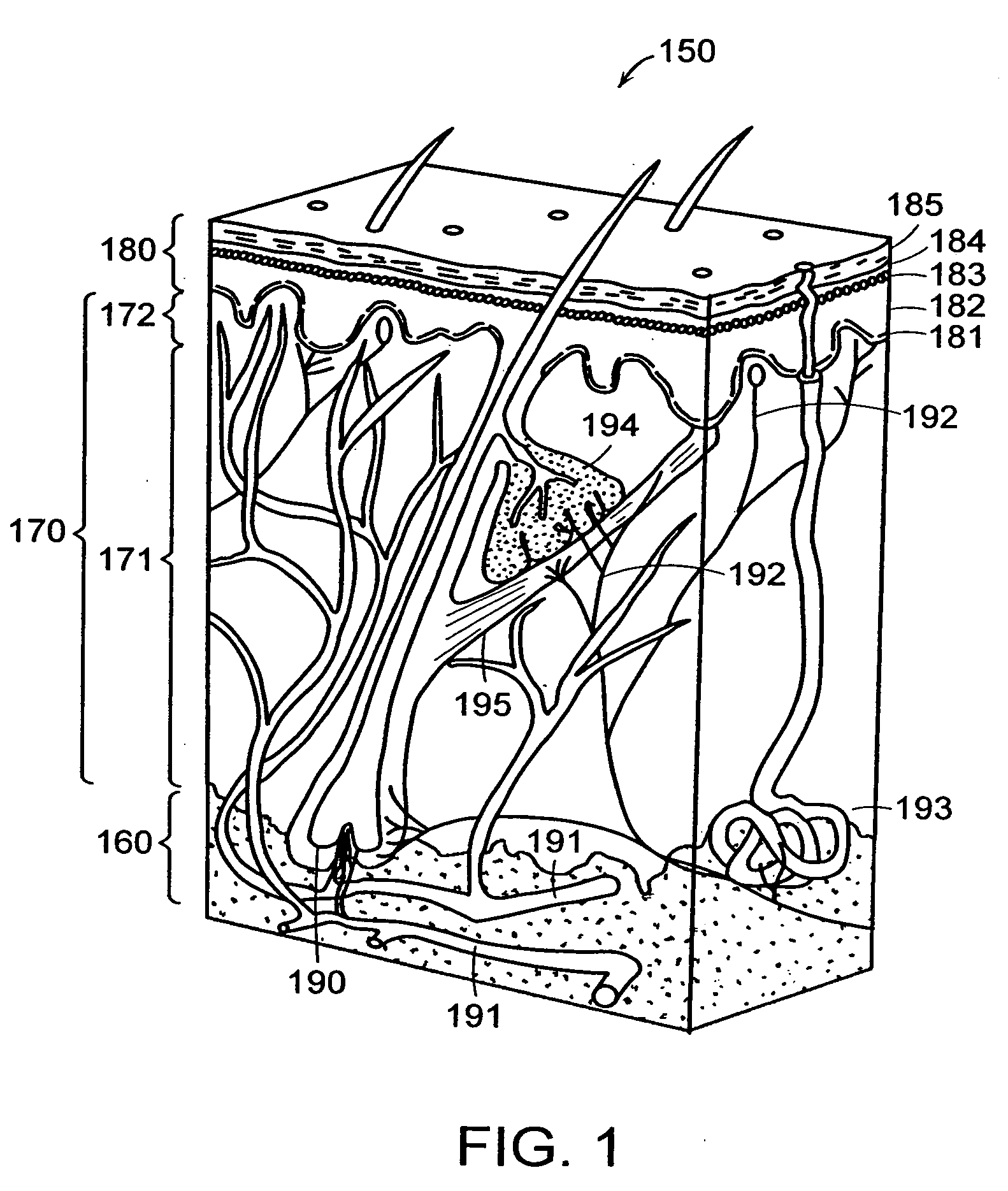Methods and products for producing lattices of EMR-treated islets in tissues, and uses therefor
a technology of emr-treated islets and lattices, which is applied in the field of methods and products for producing lattices of emr-treated islets in tissues, and uses therefor. it can solve the problems of bulky tissue damage, difficult to eliminate unwanted side effects, and vessel collapse and di
- Summary
- Abstract
- Description
- Claims
- Application Information
AI Technical Summary
Benefits of technology
Problems solved by technology
Method used
Image
Examples
example 1
Computational and Theoretical Models of Islets and Islet Formation
[0290] The optical, thermal and damage islets models described above were analyzed using computational models. To get a three-dimensional optical islet below the skin surface and limited from all sides, the beam can be focused into the skin. Three dimensional thermal or damage islets below the skin surface can be produced using three dimensional optical islets or using skin surface cooling in combination with optical beams with converted, diverged or collimated beams. On the other hand, two-dimensional and one-dimensional islets below or including the skin surface and three-dimensional islets including the skin surface can be obtained using a collimated beam incident normal to the skin surface. For this reason, the effects of both collimated and focused beams were considered. Furthermore, the procedures emphasized here are those where the thermal and damage islets appear due to the light absorption by the tissue wat...
example 2
Devices and Systems for Creation of Islets
[0350] One embodiment of the invention was described above in connection with FIGS. 3A and 3B. The following types of lenses and other focusing optics can be used with such an embodiment.
Lenses and Other Focusing Elements.
[0351]FIGS. 19A-27C illustrate various systems for delivering radiation in parallel to a plurality of target portions 214. The arrays of these figures are typically fixed focus arrays for a particular depth d. This depth may be changed either by using a different array having a different focus depth, by selectively changing the position of the array relative to the surface of the patient's skin or to target volume V or by controlling the amplitude-phase distribution of the incident radiation. FIGS. 28-31 show various optical lens arrays which may be used in conjunction with the scanning or deflector systems of FIGS. 32A-37 to move to successive one or more focused portions 214 within target volume V. Finally, FIGS. 38 ...
example 3
Enhanced-Penetration Channels and Optical Clearance of Pig Skin In Vitro
[0396] A lattice of damage islets was created in the stratum corneum of farm pig skin using a standard flash-arc-lamp system that emits in the 650-1200 nm band (StarLux Rs™, Palomar Medical Technologies, Burlington, Mass.) and a damage islet mask consisting of carbon particles in a film which was applied to the surface of the skin. Furthermore, to determine optical clearance of treated areas of pig skin specimens, a 40% solution of glucose in water was applied to the surface of the specimen. Optical clearance refers to a change in optical properties of the tissue which makes it more transparent in the optical range by reducing light scattering. Permeation of the skin by glucose or glycerin increases the optical clearance by reducing the refractive index differences between the interstitial solution and the intercellular matrix proteins collagen and elastin.
[0397] In a first set of experiments, an approximatel...
PUM
 Login to View More
Login to View More Abstract
Description
Claims
Application Information
 Login to View More
Login to View More - R&D
- Intellectual Property
- Life Sciences
- Materials
- Tech Scout
- Unparalleled Data Quality
- Higher Quality Content
- 60% Fewer Hallucinations
Browse by: Latest US Patents, China's latest patents, Technical Efficacy Thesaurus, Application Domain, Technology Topic, Popular Technical Reports.
© 2025 PatSnap. All rights reserved.Legal|Privacy policy|Modern Slavery Act Transparency Statement|Sitemap|About US| Contact US: help@patsnap.com



